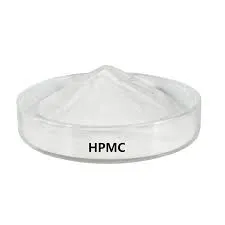
Սպտ . 22, 2024 07:40 Back to list
uses of hydroxypropyl methylcellulose
Uses of Hydroxypropyl Methylcellulose
Hydroxypropyl Methylcellulose (HPMC) is a semi-synthetic polymer derived from cellulose, which is known for its versatility across various industries. Due to its unique properties, including solubility in both water and organic solvents, HPMC plays a crucial role in the formulation of many products. Its applications span from pharmaceuticals and food to construction and cosmetics, making it an invaluable compound.
Uses of Hydroxypropyl Methylcellulose
In the food sector, HPMC serves as a food additive and ingredient that enhances texture and moisture retention. It is particularly valuable in gluten-free baking, where it mimics the elasticity and cohesiveness of gluten, improving the overall quality of the final product. HPMC is also used as a thickening agent in sauces, dressings, and other liquid foods, contributing to a more appealing mouthfeel without adding calories. Its non-toxic nature ensures its safety for consumption, making it a preferred option in the food industry.
uses of hydroxypropyl methylcellulose

Another prominent use of HPMC is in construction, particularly in cement-based materials. HPMC functions as a water-retaining agent, helping to improve workability and adhesion in mortar and plaster. By enhancing the application process, HPMC contributes to the durability and strength of building materials. It also aids in controlling the setting time, allowing for more flexibility in construction projects.
In cosmetics and personal care, HPMC is used as a thickener, emulsifier, and stabilizer across a variety of products, including lotions, creams, and gels. Its ability to retain moisture makes it particularly beneficial in skin care formulations, leaving a smooth, non-greasy feel. Additionally, HPMC acts as a film-forming agent in hair styling products, providing hold while maintaining a natural appearance.
Despite its many advantages, the use of HPMC is not without challenges. Manufacturers must ensure quality control to maintain the consistency of HPMC properties in their products. Moreover, as consumer awareness of ingredient safety heightens, companies are pushed to be transparent about the sources and processes involved in generating HPMC.
In conclusion, Hydroxypropyl Methylcellulose represents a remarkable example of how a single compound can serve diverse purposes across multiple sectors. Its multifunctional properties facilitate improvements in products, whether enhancing drug delivery systems, improving food textures, ensuring construction quality, or providing stability in personal care items. As industries continue to evolve, the demand for effective and safe ingredients like HPMC is likely to grow, solidifying its place in modern applications.
-
The Widespread Application of Redispersible Powder in Construction and Building Materials
NewsMay.16,2025
-
The Widespread Application of Hpmc in the Detergent Industry
NewsMay.16,2025
-
The Main Applications of Hydroxyethyl Cellulose in Paints and Coatings
NewsMay.16,2025
-
Mortar Bonding Agent: the Key to Enhancing the Adhesion Between New and Old Mortar Layers and Between Mortar and Different Substrates
NewsMay.16,2025
-
HPMC: Application as a thickener and excipient
NewsMay.16,2025
-
Hec Cellulose Cellulose: Multi functional dispersants and high-efficiency thickeners
NewsMay.16,2025







